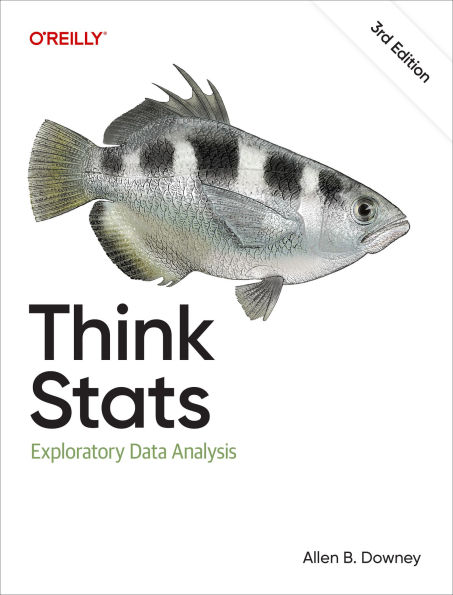If you know how to program, you have the skills to turn data into knowledge. This thoroughly revised edition presents statistical concepts computationally, rather than mathematically, using programs written in Python. Through practical examples and exercises based on real-world datasets, you'll learn the entire process of exploratory data analysis—from wrangling data and generating statistics to identifying patterns and testing hypotheses.
Whether you're a data scientist, software engineer, or data enthusiast, you'll get up to speed on commonly used tools including NumPy, SciPy, and Pandas. You'll explore distributions, relationships between variables, visualization, and many other concepts. And all chapters are available as Jupyter notebooks, so you can read the text, run the code, and work on exercises all in one place.
- Analyze data distributions and visualize patterns using Python libraries
- Improve predictions and insights with regression models
- Dive into specialized topics like time series analysis and survival analysis
- Integrate statistical techniques and tools for validation, inference, and more
- Communicate findings with effective data visualization
- Troubleshoot common data analysis challenges
- Boost reproducibility and collaboration in data analysis projects with interactive notebooks
If you know how to program, you have the skills to turn data into knowledge. This thoroughly revised edition presents statistical concepts computationally, rather than mathematically, using programs written in Python. Through practical examples and exercises based on real-world datasets, you'll learn the entire process of exploratory data analysis—from wrangling data and generating statistics to identifying patterns and testing hypotheses.
Whether you're a data scientist, software engineer, or data enthusiast, you'll get up to speed on commonly used tools including NumPy, SciPy, and Pandas. You'll explore distributions, relationships between variables, visualization, and many other concepts. And all chapters are available as Jupyter notebooks, so you can read the text, run the code, and work on exercises all in one place.
- Analyze data distributions and visualize patterns using Python libraries
- Improve predictions and insights with regression models
- Dive into specialized topics like time series analysis and survival analysis
- Integrate statistical techniques and tools for validation, inference, and more
- Communicate findings with effective data visualization
- Troubleshoot common data analysis challenges
- Boost reproducibility and collaboration in data analysis projects with interactive notebooks

Think Stats: Exploratory Data Analysis
324
Think Stats: Exploratory Data Analysis
324Related collections and offers

Product Details
| ISBN-13: | 9781098190224 |
|---|---|
| Publisher: | O'Reilly Media, Incorporated |
| Publication date: | 04/04/2025 |
| Sold by: | Barnes & Noble |
| Format: | eBook |
| Pages: | 324 |
| File size: | 9 MB |
